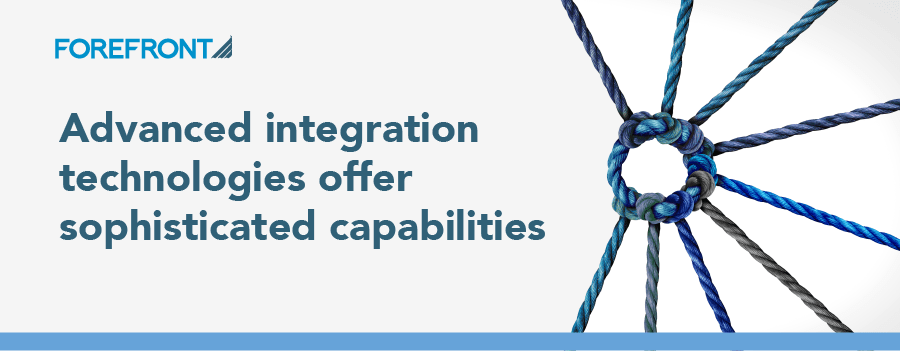In the “new normal” of remote work, manual processes associated with contract lifecycle management are quickly turning out to be less sustainable. In this digital era, business still needs to get done faster, easier, and securely in a more collaborative and compliant approach than ever before. Contract Lifecycle Management is one area that has remained plagued with manual inefficiencies, becoming the Achilles’ heel for many businesses. It is time to transform contract management and invest now in a cloud-based CLM solution. Here’s why…
1. Streamline Communication & Workflows
Team communication and collaborative CLM workflows must adapt to meet today’s digital reality. To meet these challenges, there are a number of steps to be considered:
-
Ensure appropriate access privileges for those who need to retrieve, review, and approve contracts
-
Create standardized contract templates with time-saving capabilities (e.g., clause library)
-
Remove inefficiencies and streamline contract management processes to be swift and compliant
One example of the challenges relates to sales forecasting, as meeting sales targets is more critical than ever. A given opportunity entered in CRM may not account for the current state of the contract negotiation. Too much time is often spent tracking down the contract team members either in sales, legal, finances, support, etc. to understand the contract status and resolve any issues at hand, in order to meet the forecast timeline.
2. Reduce Costs & Boost Margins
Businesses need to consider centralizing and categorizing CLM data in a current, relevant, and consistent way. It is an opportunity to ensure compliance to latest regulatory mandates. Benefits include:
-
Improve contract search capabilities, reduce wasted time and disorganization
-
Reduce overall CLM costs, in personal and contract management silos
-
Gain efficiencies, respond swiftly and accurately to contract management needs and timelines
One example is contract authoring. Businesses often overpopulate the system with too many non-standard contracts with each new contract type.
A potential situation could be avoided with standard contract language, a clause library, few clicks of pre-approved options, and redlines tracking transparency – All possible with a seamless cloud CLM solution.
3. Mitigate Potential Risks
Businesses need to understand their commitments to their customers. Areas like contract award velocity, compliance obligations, and renewals can lead to significant legal and financial risks. For instance:
-
Who is signing what contract and with whom?
-
What obligations have been agreed to? What pricing or service level are we committing to?
-
What contract insights are we providing across our business functional units?
Contract lifecycle management teams needs to drive economic value to the business. Beyond reducing their costs and operating more efficiently, their function is becoming more accountable for any changes or hurdles in the contract lifecycle outcome. Contract managers have already begun to feel the impact of this disruption.
One example is the dependence on manual contract processes. It is not a tangible solution in managing obligations effectively, for any party. If tracking of obligations is manual, it is a risk contingent on the employee handling the information to not omit any obligations your business may act upon in the future.
4. Increase Productivity
Streamlining and automating manual contract management processes is not only the key to efficiency gains; it is also a way to anticipate staffing issues. By doing so:
-
Auto-generate client contracts based on agreed quotes
-
Auto-collaborate any contracts review and approval based on user profiles
-
Auto-renew contracts and store signed contracts in a single repository
Cloud-based CLM automation enables better contract management team allocation and a more suitable focus with higher value work on contract outliers. For instance, salespeople should be more concerned about closing a sale than retrieving – or worse – customizing a client contract. Or, sending the wrong quote or discount.
Automation allows for more productive contract lifecycle management, as well as a better way to extract regulatory data from agreements into business, legal, and financial risk management systems.
5. Long Term Value
To deploy a cloud-based CLM solution for your business, you need an experienced partner who knows exactly what it takes. Beyond implementation of technology, other benefits should come into play – such as said partner’s capabilities in operational contract process strategy, predictive analytics, and agreement decision-making insights.
Working with ForeFront, some of these benefits include:
-
Industry-specific CLM Best Practices and scalable business solution architecture;
-
Use cases, templates, configuration accelerators, training, and change management;
-
Agile, collaborative team and project phase-approach;
-
Multi-lingual, multi-currency CLM deployments – 120 countries, 40 languages!
Contract Lifecycle Management is quickly transforming. In addition to automating routine processes and digitizing contracts and documentations in areas such as e-billing and CPQ (Configure-Price-Quote), cloud-based CLM technology will allow the performance of more advanced tasks. As more contract management processes lend themselves to automation, ForeFront expects Artificial Intelligence (AI) to be part of the next wave of transformation and disruption. It is not hard to imagine that the future will have some aspects of AI prognosis or support for contract management solutions. As your trusted partner, ForeFront will help you with CLM best practices and solution insights along your digital transformation journey!
For Any CLM Transformation Needs, Contact Us!
B2B Commerce | Q2C Quote-to-Cash | ALM Asset Lifecycle Management










